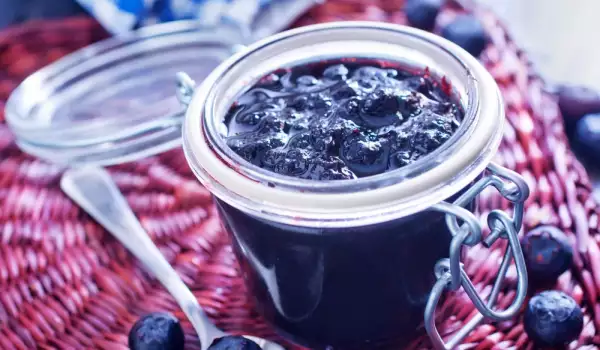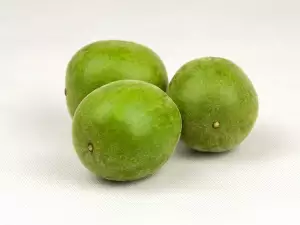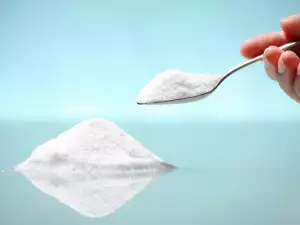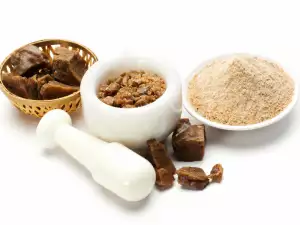To give the right thickness and consistency to some foods, we most often use gelatin and pectin in our kitchens. The food industry has at its disposal a much greater wealth of such ingredients and what exact role they fulfill is guessed from their names.
Gelling agents are used for gelling process of foods. They give them the desired shape and structure. Thickeners make food thicker and supported by other substances known as stabilizers, assist emulsifiers in their effect on food to maintain its consistency.
To maintain the physical qualities and texture of food during its production, transport, storage and preparation, substances called stabilizers are used.
All these supplements are of natural, semi-synthetic or synthetic composition. All with a natural composition, are plant-based, with the exception of gelatin. Natural products are often referred to as gums. Gum arabic, guar gum, xanthan gum, agar gum and many others are known.
According to their chemical composition, they are made of carbohydrates, these are galactose and mannose, which are connected in a different way and in a different ratio.
These natural components are polysaccharides. They have the task of increasing the viscosity of the food product, which means making it thicker. They are used as binders in food preservation and in the manufacture of animal feed.
They also have a role as a main ingredient in dietary drinks. They are also an additive in frozen fruit and ice creams and the purpose of their use is to delay the candying of the fruit.
In fruit juices and drinks they are a substance that serves to make the juices darker in color. Their presence in breakfast cereals means that they play the role of fiber. In chewy candies and candies they are the forming substance in them. They are a suspension in chocolate milk.
However, the huge variety of applications does not mean that large amounts of them are added. In most foods, they represent 0.1 to 2 percent of the composition.
Apart from the purely technological role, these supplements also have nutritional value. They are the fibers that facilitate digestion and often have laxative properties.
One representative of these substances is xanthan gum, often just called xanthan. What is xanthan and how is it used?
Essence and production of xanthan gum

Xanthan gum is written on food labels as E415. It belongs to the polysaccharides and is obtained during the biotechnological fermentation of some plant raw materials. It is in the form of a secondary metabolic product of a microorganism with the Latin name Xanthomonas campestris. It is a bacterium that also causes black spots on vegetables such as cauliflower and broccoli.
The fermentation process usually uses corn sugar or other sugar, as well as some cereals. A slimy mass is obtained, which is dried and grinded into a white powder. There are many other bacteria that can fulfill this role, but only xanthan can be produced in industrial quantities.
In the production process of xanthan gum, no viable bacteria are left in the final product, which eliminates any risks when using the gum.
Xanthan gum was first obtained in the United States in the mid-twentieth century. The use of the ingredient in food was authorized in 1969. Today, the polysaccharide is widely used and there are no restrictions on its inclusion in cooking.
In appearance, it is a transparent product, which allows the easy formation of air bubbles. If it is not mixed with another product, it is not as viscous.
Xanthan Gum Uses
Xanthan gum is an extremely popular and used supplement. It ranks among the 20 most used ingredients in the food industry. It is also found in cosmetic products.
E415 can be found on the ingredients labels of toothpaste, ice cream, ready-made sauces, where it most often represents 0.5 percent of the weight of the food. Xanthan gum is also in frozen foods, drinks, gluten-free pasta foods to thicken the dough.
E415 will be found on the labels of fish and meat preparations, in mustard, mayonnaise, ketchup, yogurt and candies, as well as all products that we frequently defrost and refreeze.
Not only foods need this stabilizing agent. Xanthan gum is actively used in cosmetic products - shampoos, shower gels, lotions, liquid soaps.
The application of xanthan in the pharmaceutical industry is no less wide - we find it in the production of blood substitutes, anticoagulants, in the production of suspensions, capsules, etc.
Xanthan gum is also used in personal care products, paints, lubricants and medical devices.
Benefits of Xanthan Gum
If we are looking for health benefits of using xanthan gum, there are none. This supplement has the character of a chemically neutral product for humans, which means that when it enters the body, it does not react to it and after a while it is eliminated without a trace.
However, for people with dysphagia, which is a problem in swallowing food, E414 is used to prepare a creamy meal from meat, vegetables and other products. Food with this consistency is easier to swallow.
For those following a low-calorie diet, xanthan gum is also suitable. It can be used to prepare dishes with a low energy effect, since the additive itself is not absorbed in the body and has no caloric value.
It has a creamy taste, but does not change the taste of the food. It is added because it is an excellent thickener, it plays the role of a gelling agent. Adds density to food so it doesn't fall apart. It is used in jellies, ice cream, jam, chocolate paste, all for this purpose.
The benefits of xanthan gum are its harmlessness, natural origin, cheap way of production and at the same time, small doses required, which makes it economically very profitable.
E415 does not change its properties no matter how often it is frozen and defrosted and has a high solubility in water, it is resistant to acids. It does not come into contact with pectin, gelatin and other additives used in cooking.

Is xanthan gum safe?
The conclusions of half a century of research on xanthan gum is that the supplement is completely safe and does not harm human health. It is highly chemically inert. When ingested, it is not absorbed into the bloodstream and does not participate in biochemical processes in the body.
However, excessive use in small children can cause stomach bloating and nausea. A disease - necrotic enterocolitis in babies - has also been reported, with stomach problems caused by xanthan gum in food thickeners, infant formulas, purees and others.
It can also spoil food if too much xanthan gum is added to it.
Compatibility of xanthan gum with other additives
E415 is rarely used on its own. When combined with guar gum, a more stable and viscous medium is achieved, so these two substances are very often found in tandem. It is often combined with similar carob products.















Comments